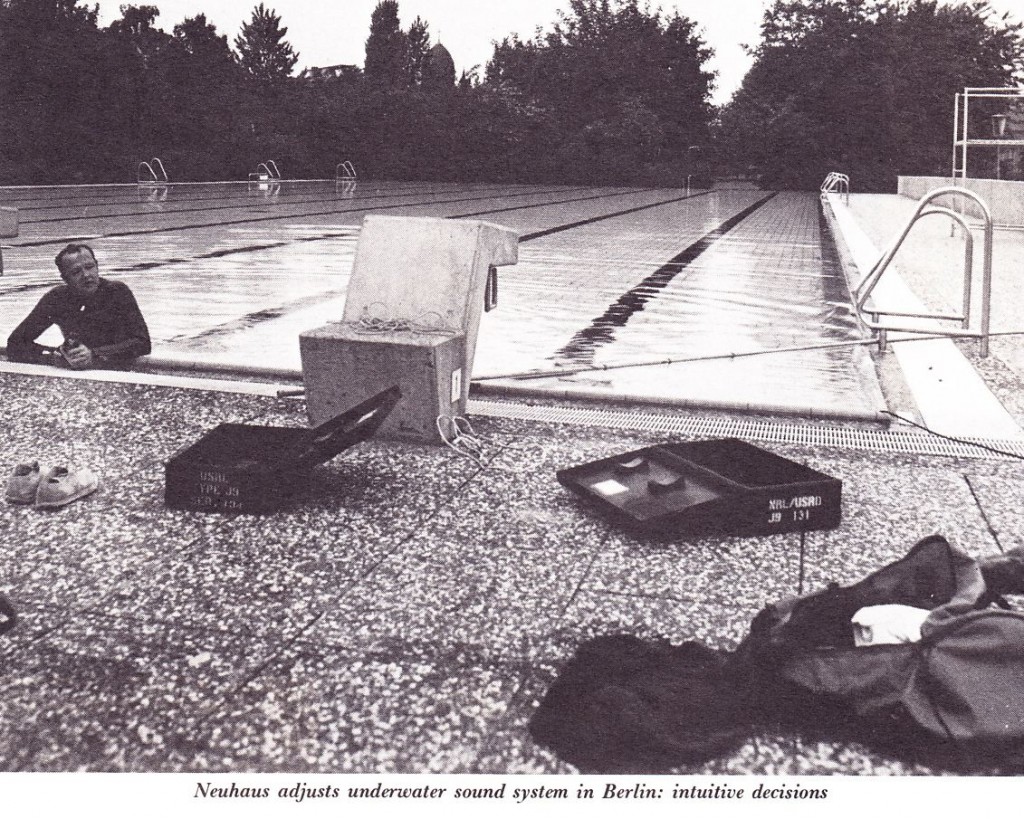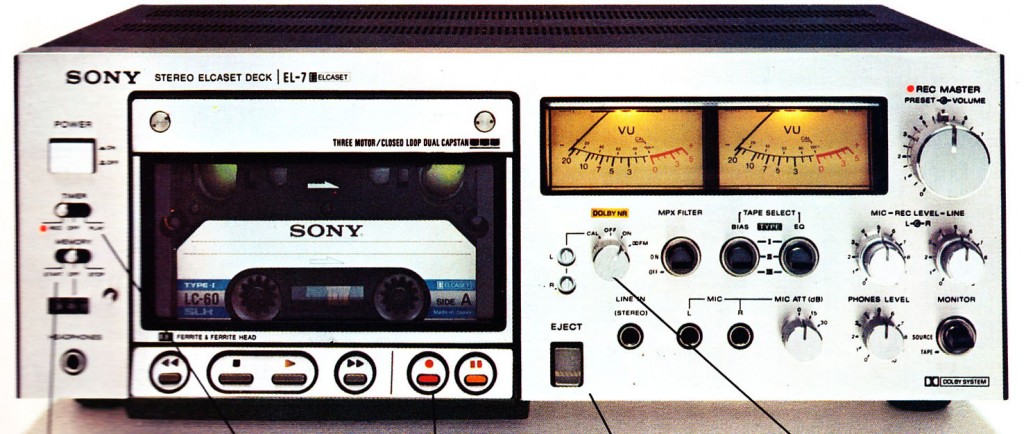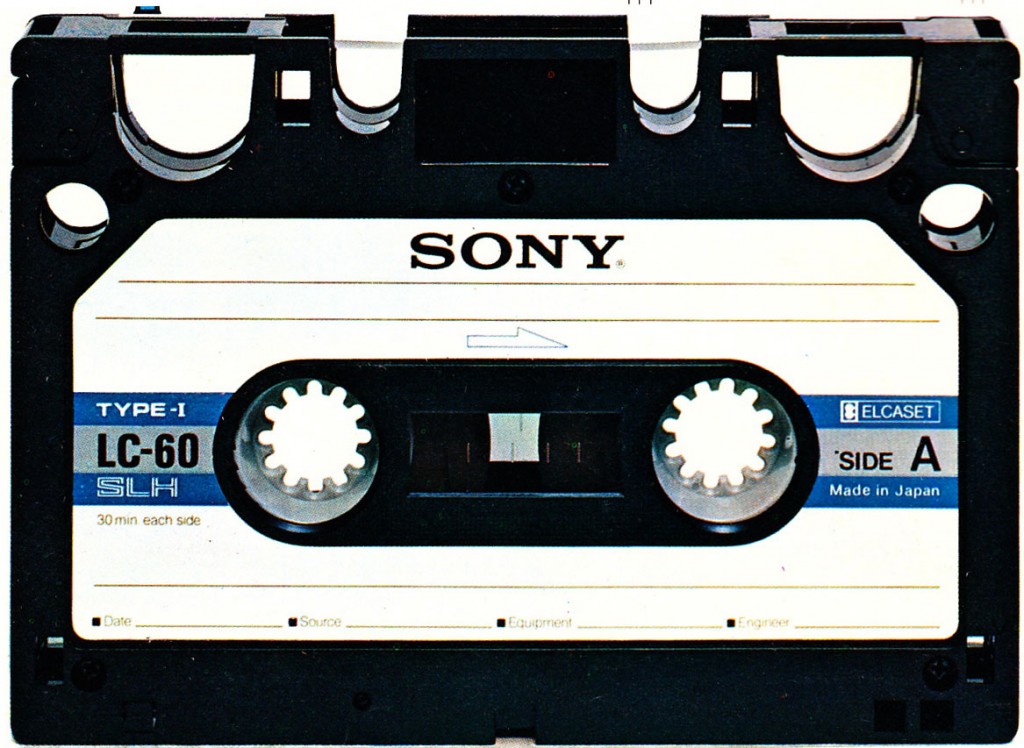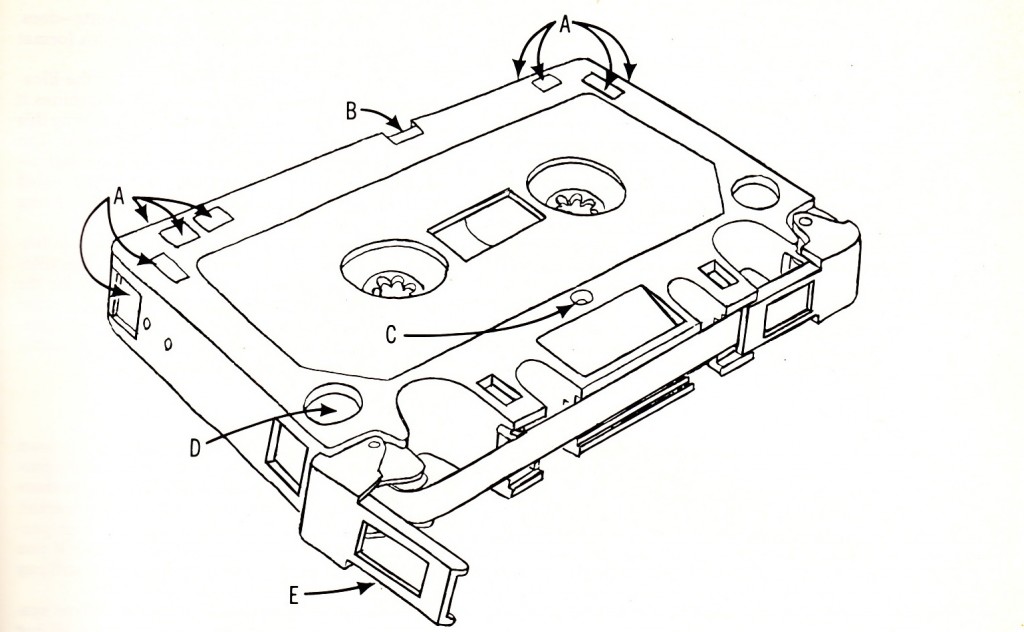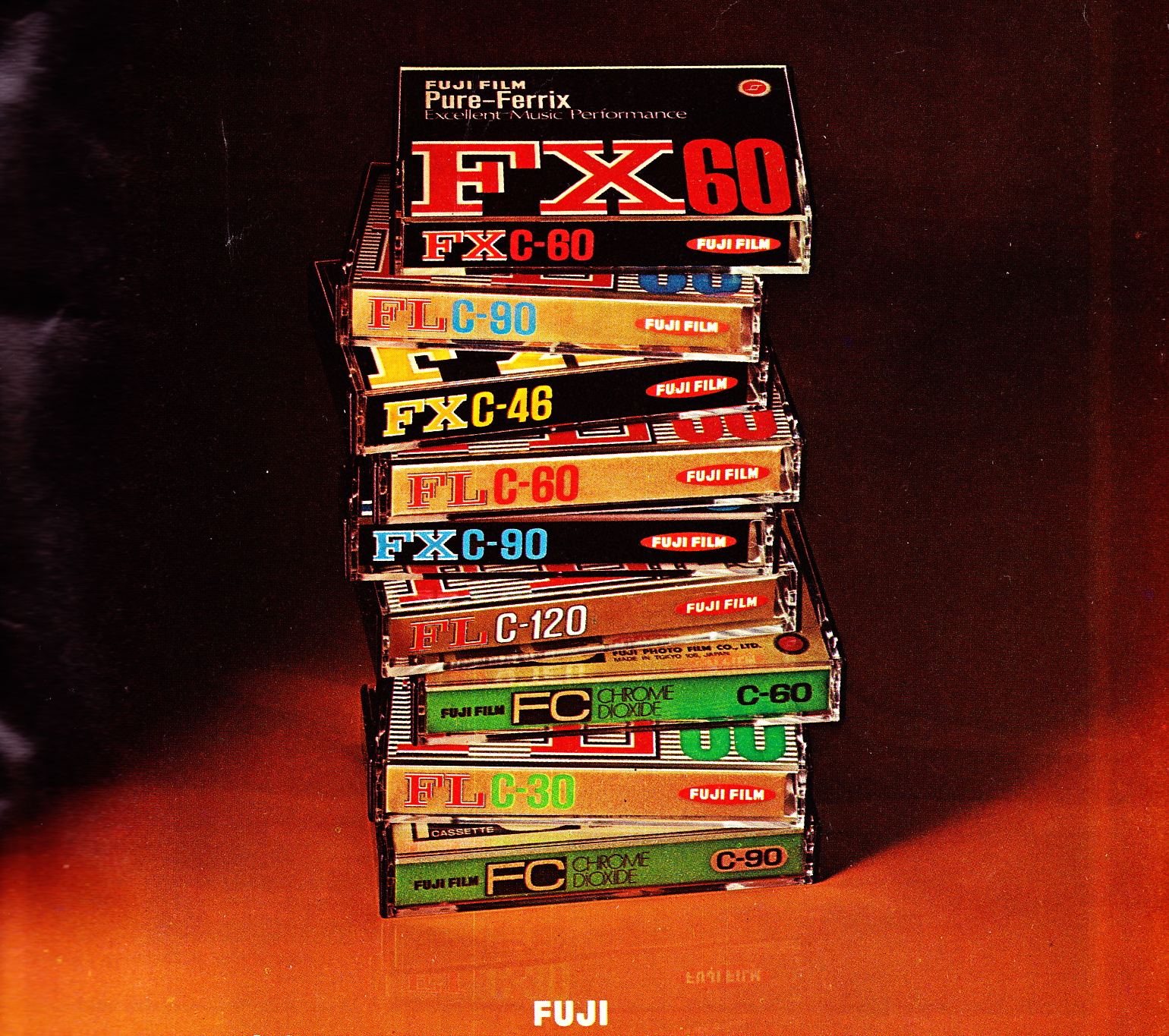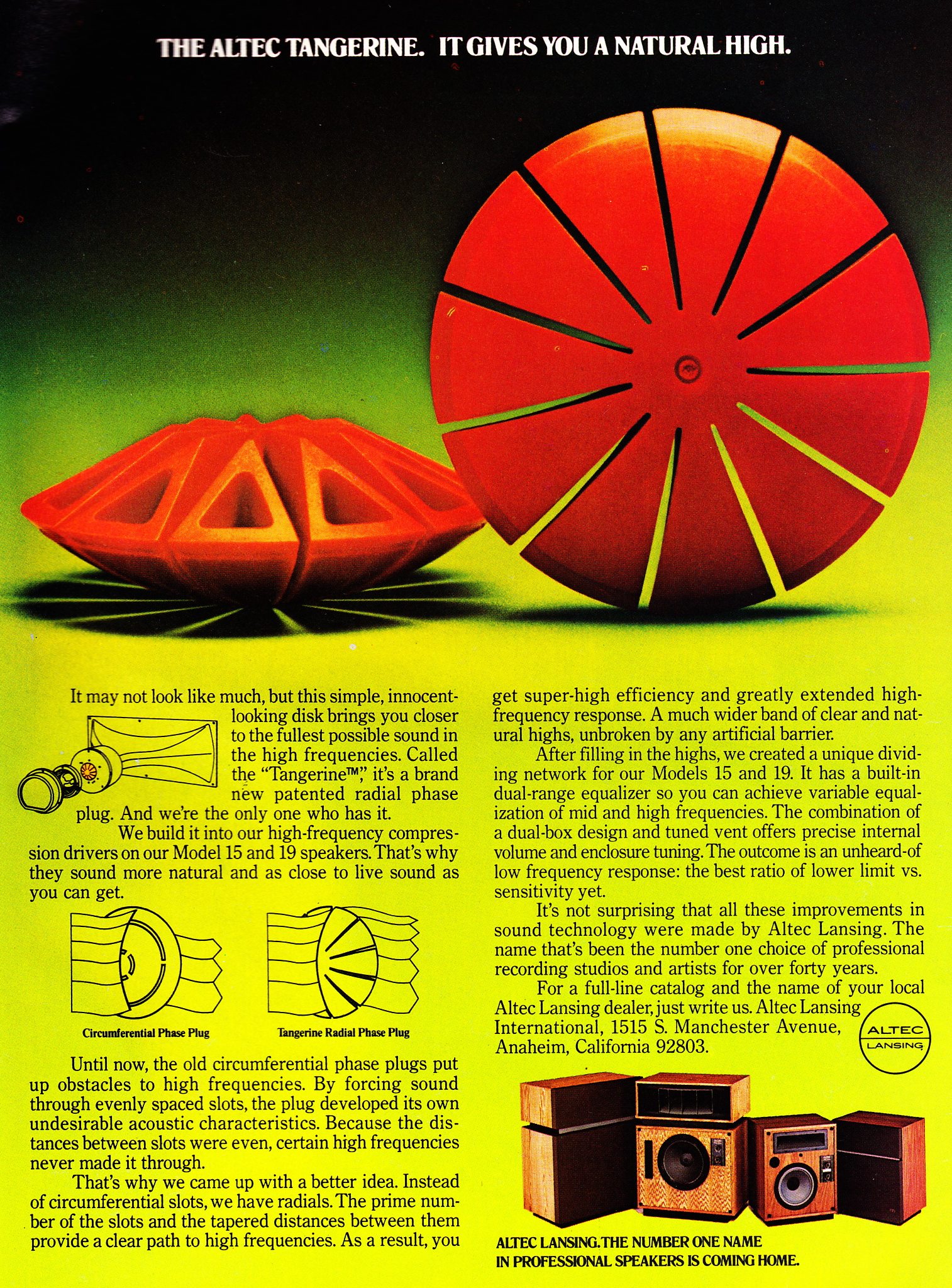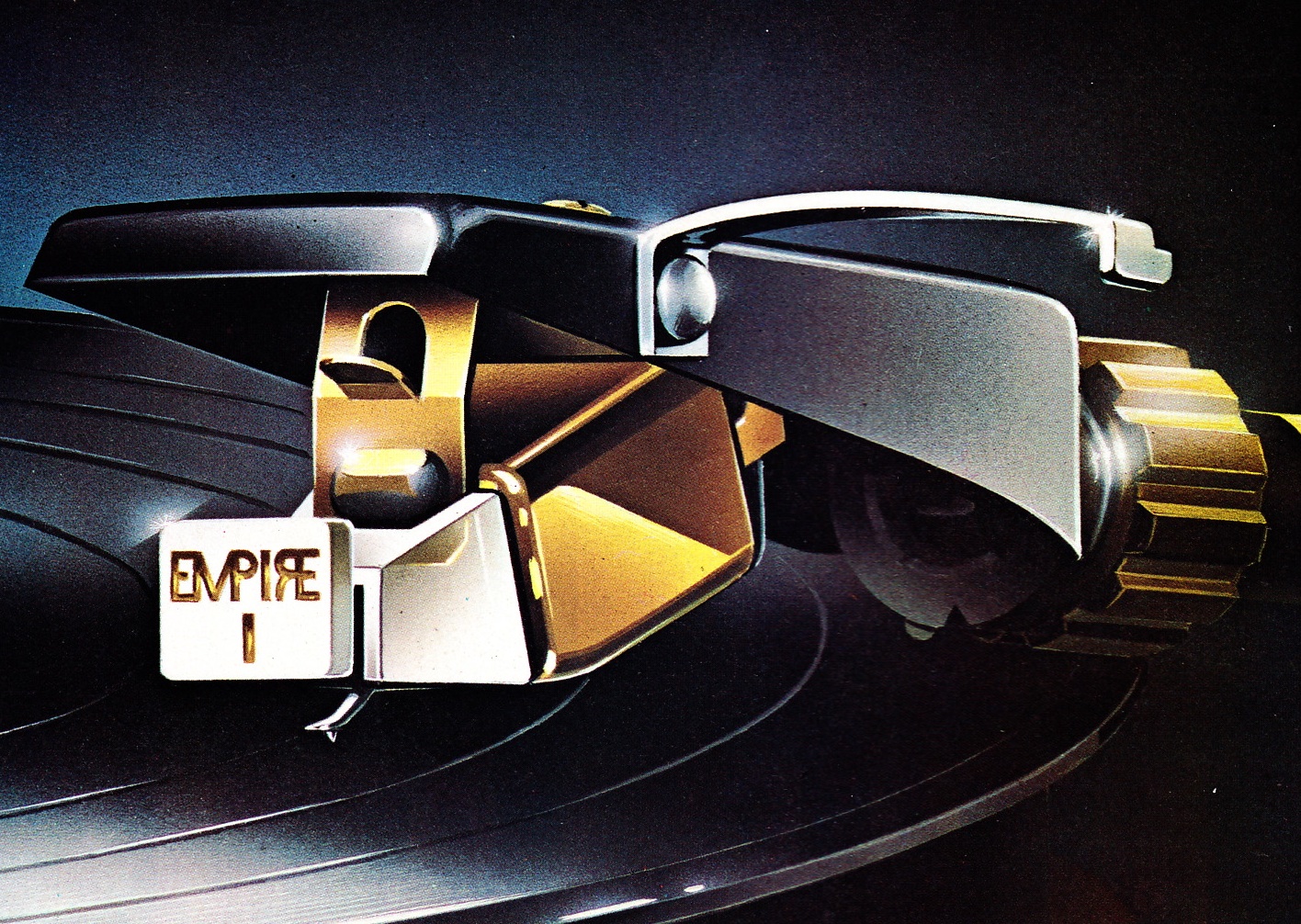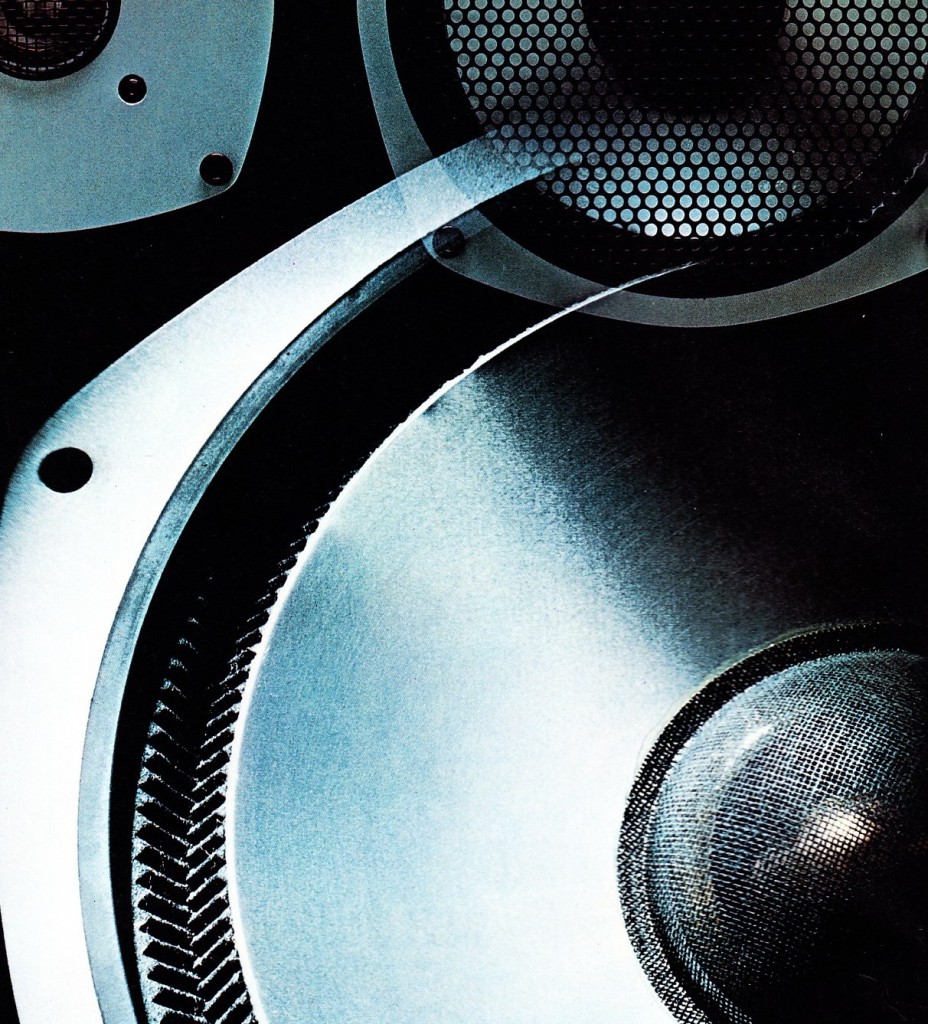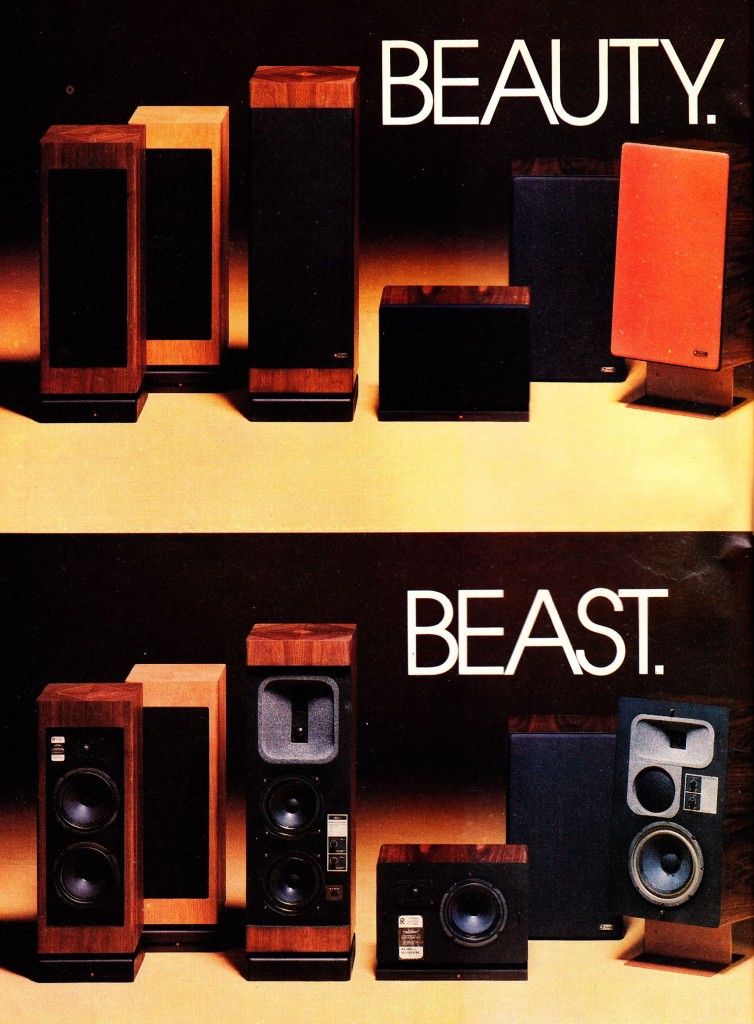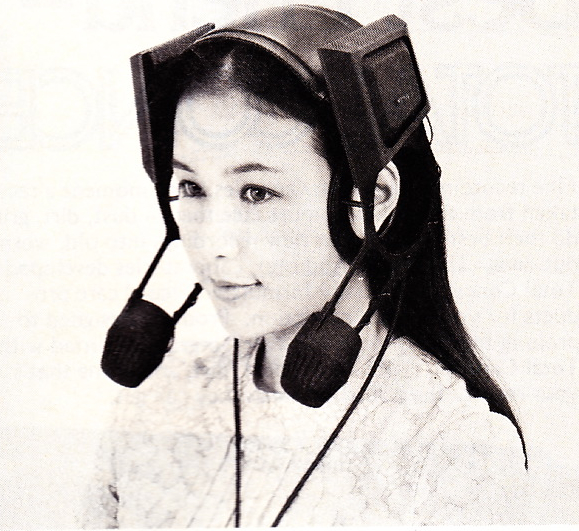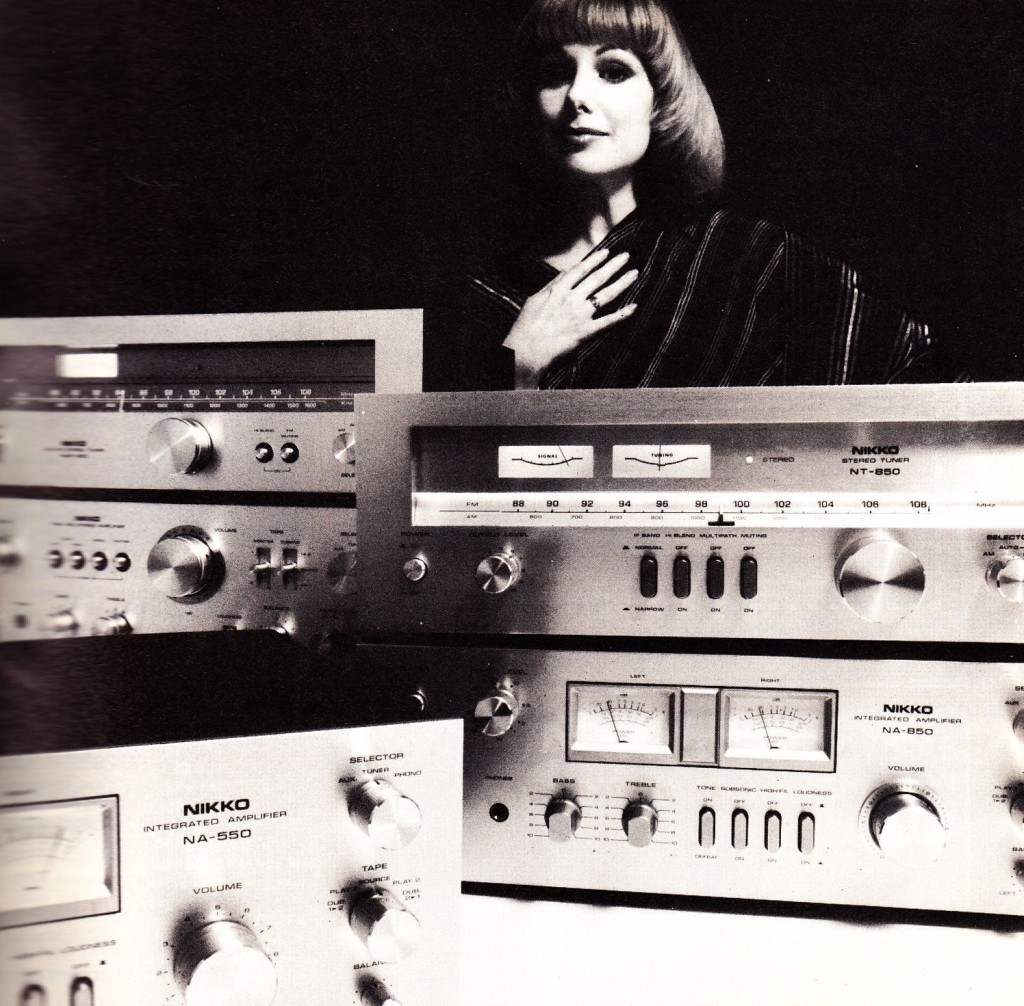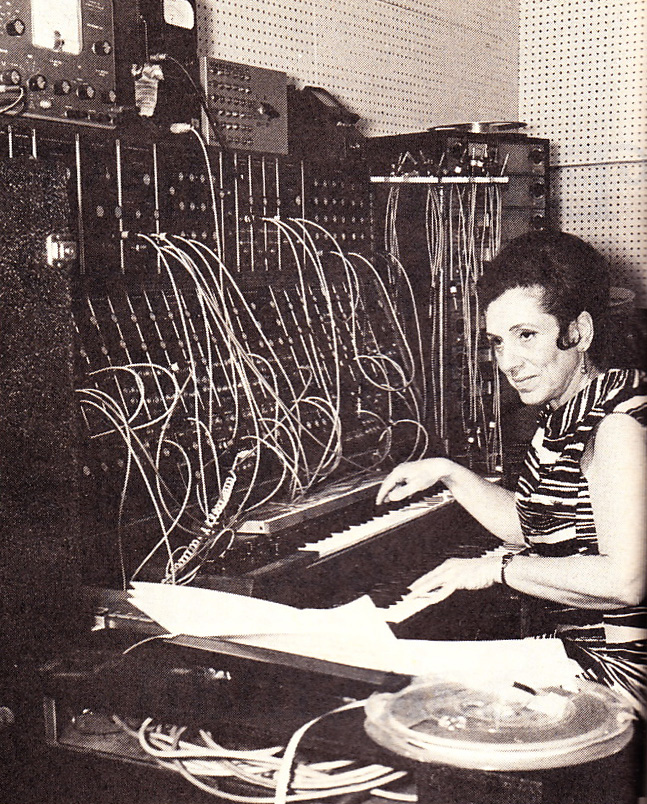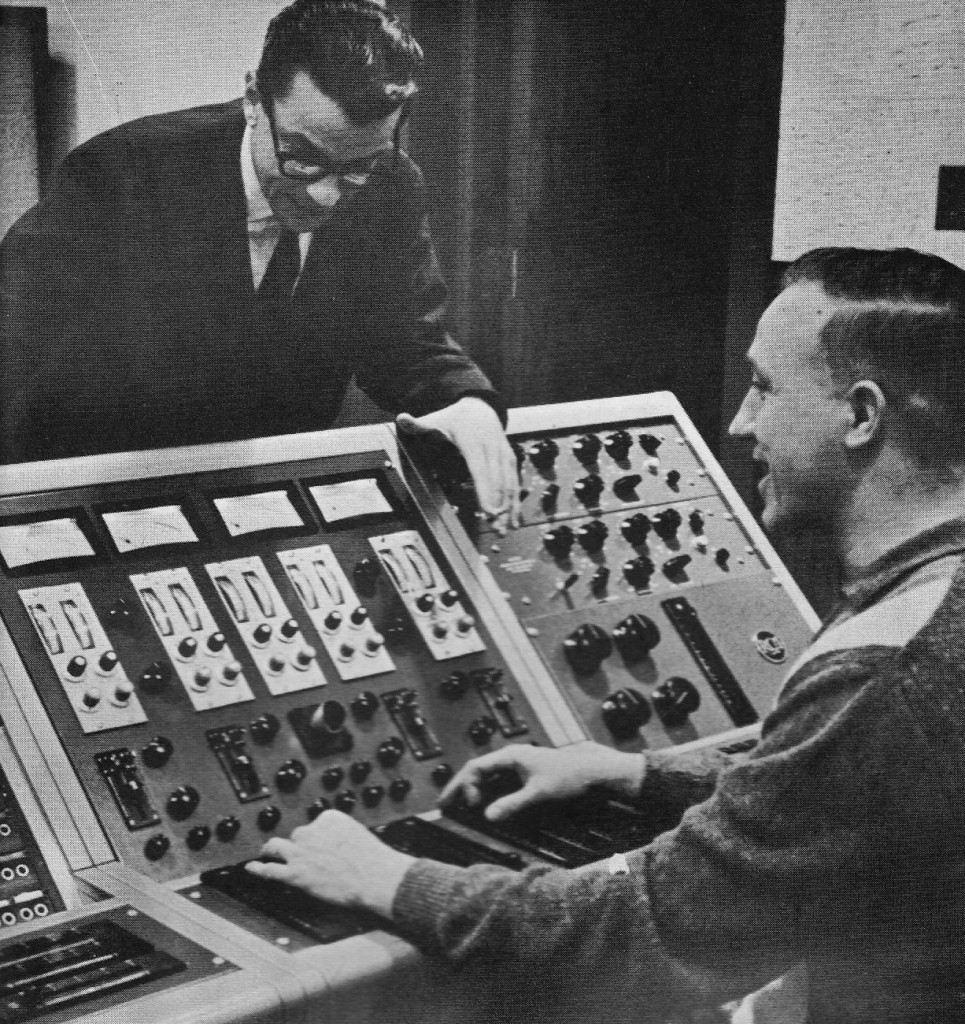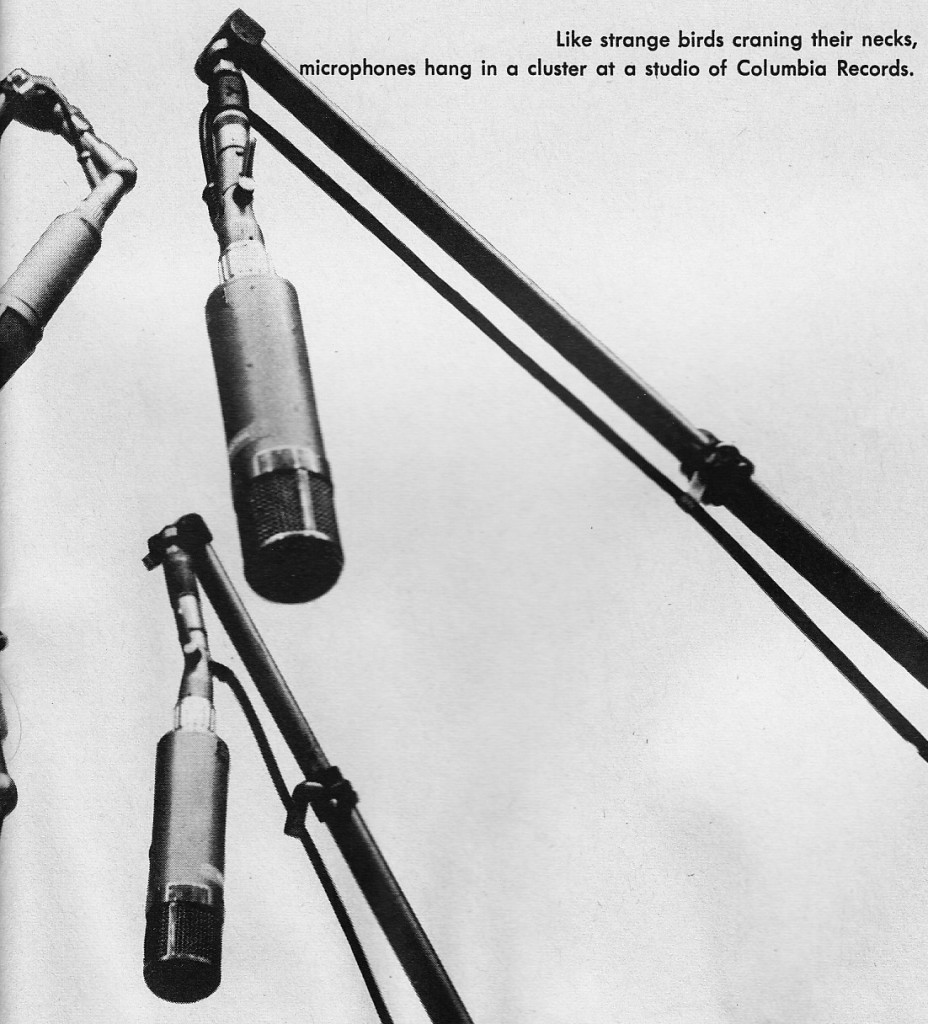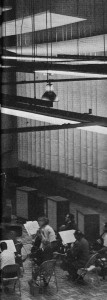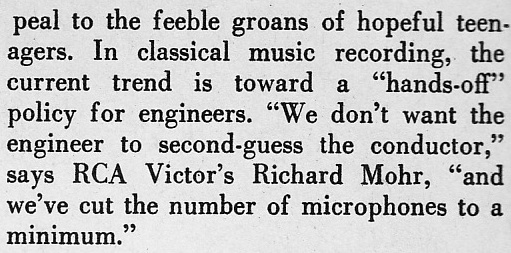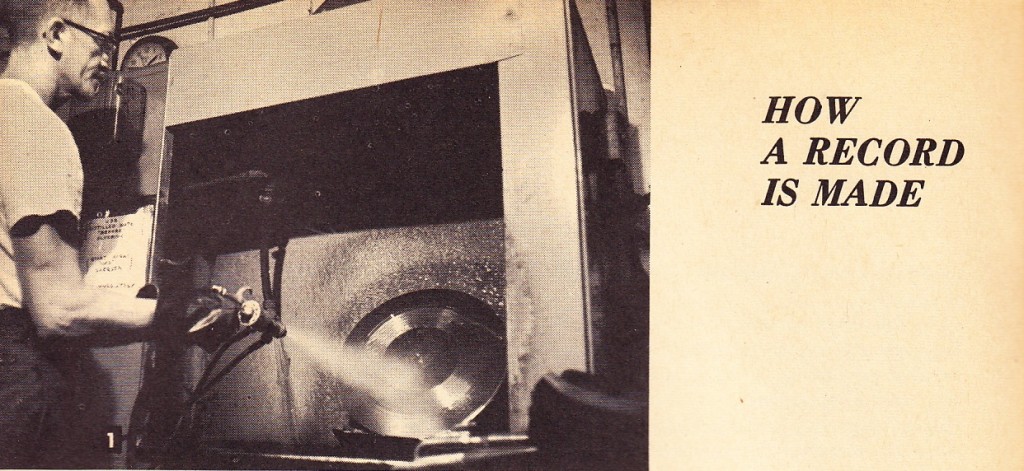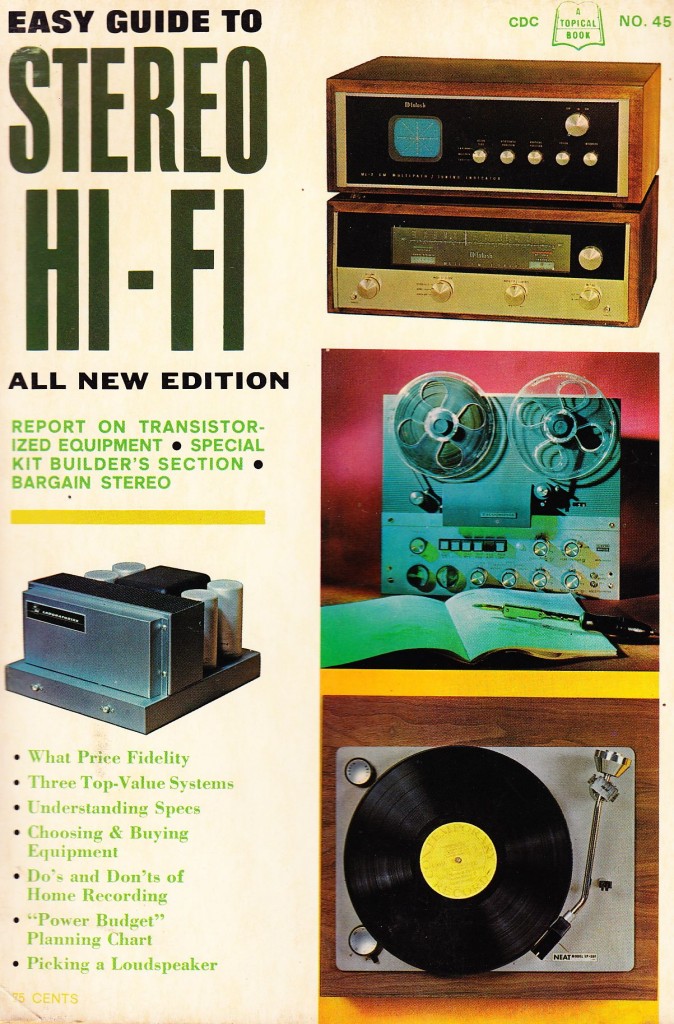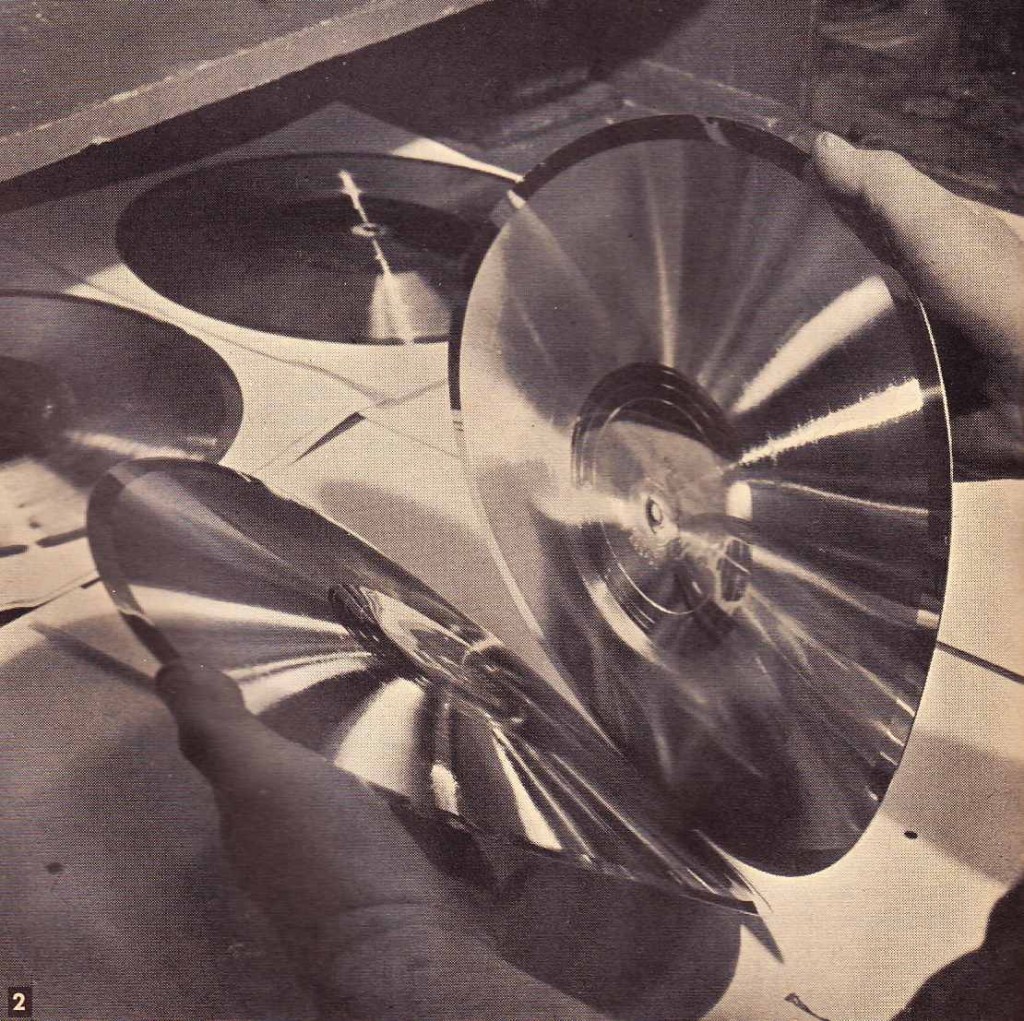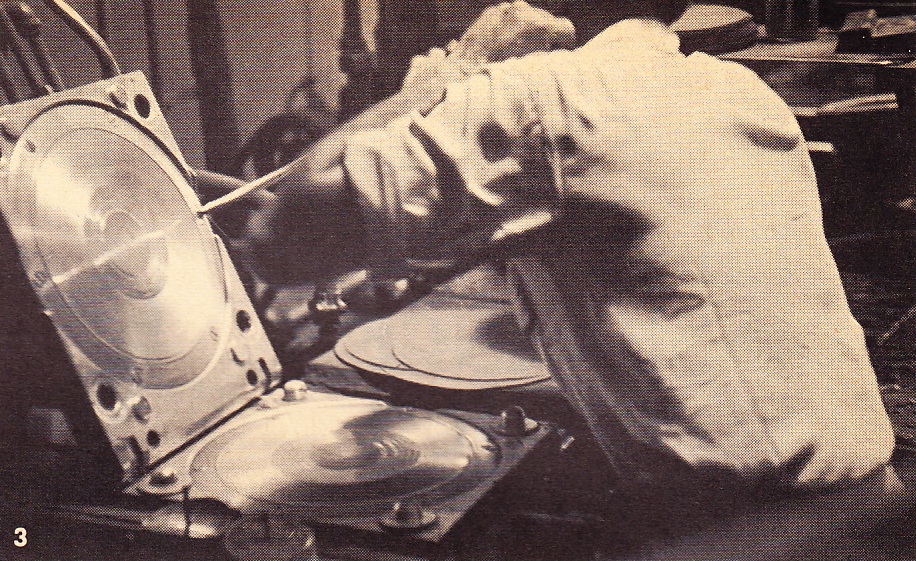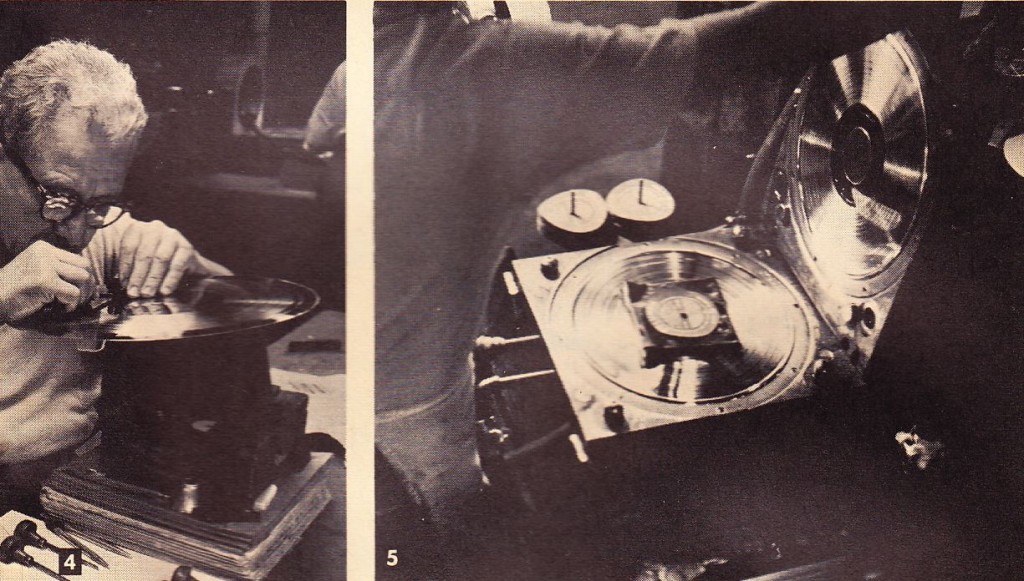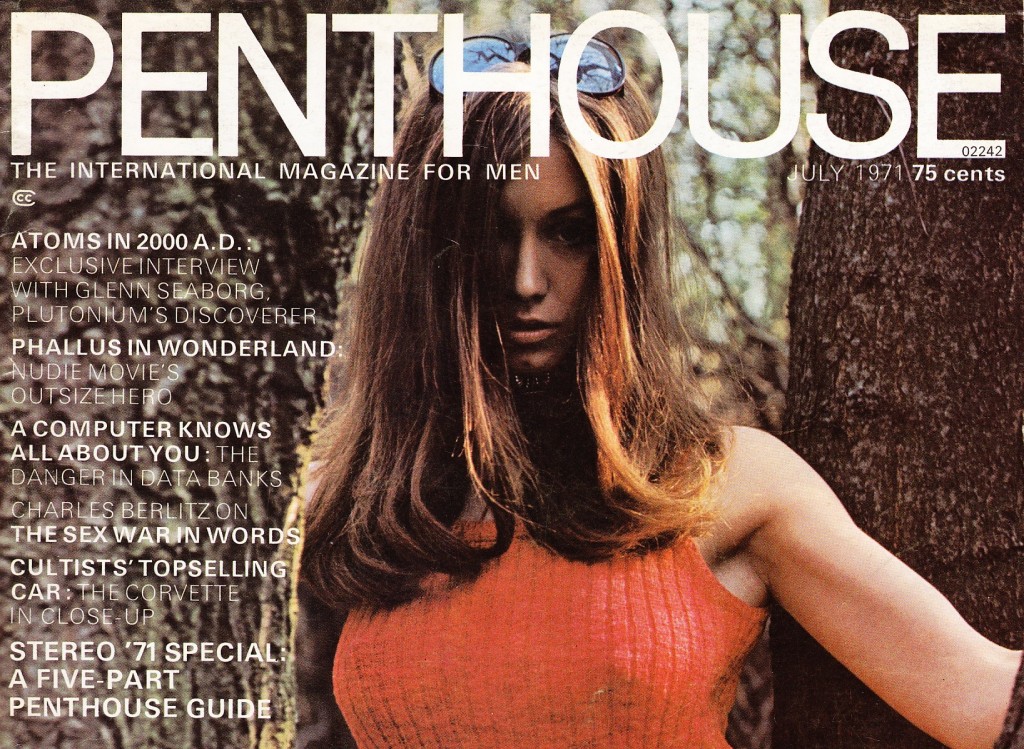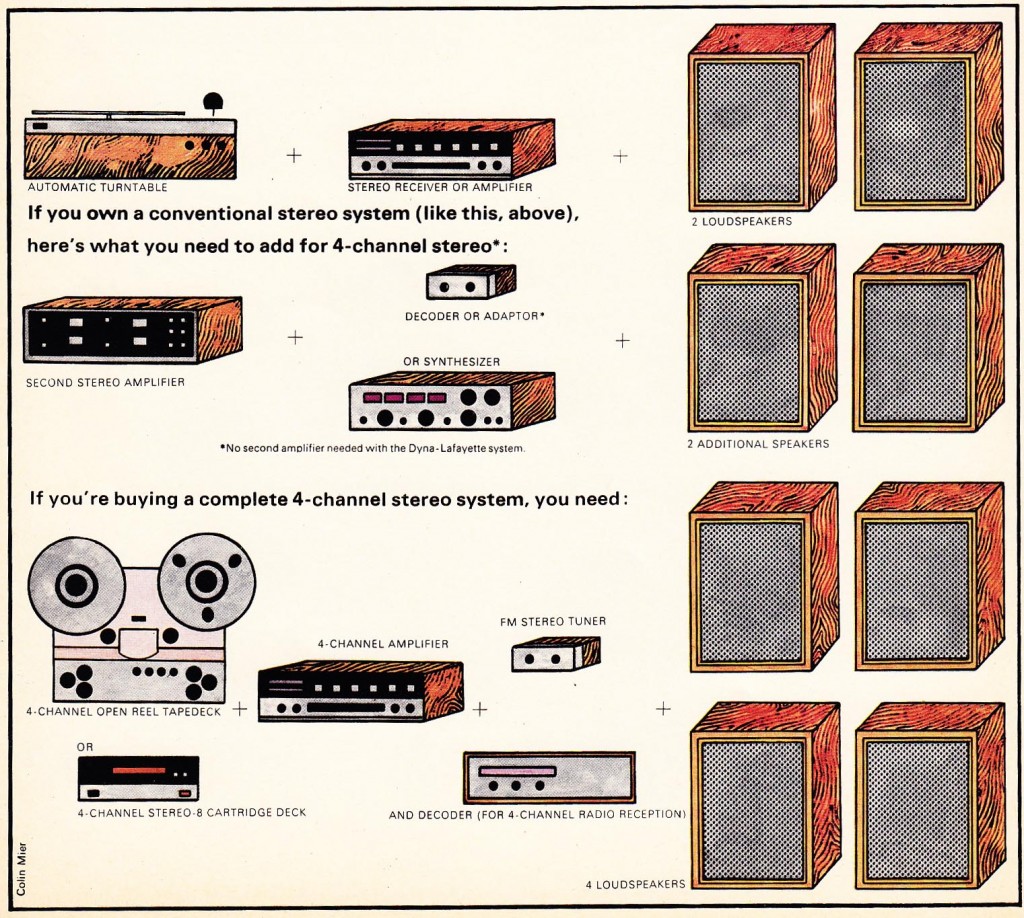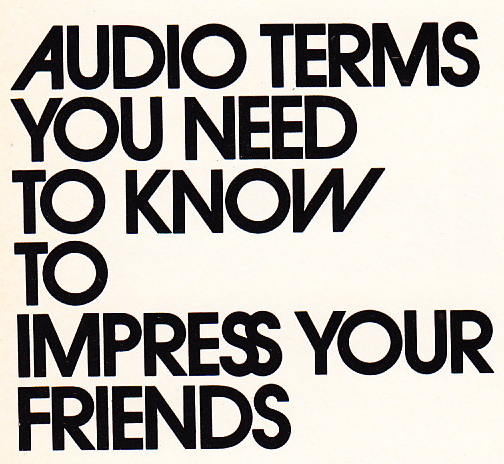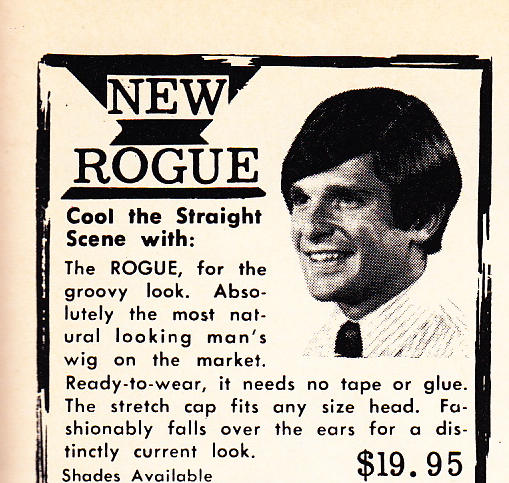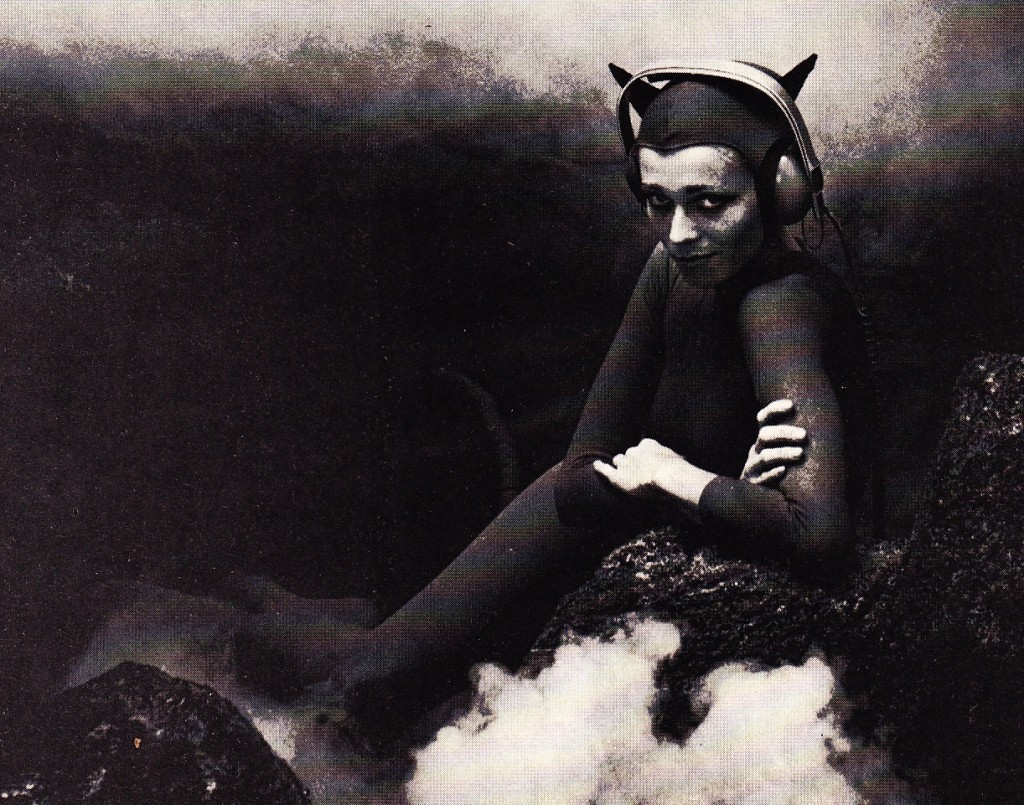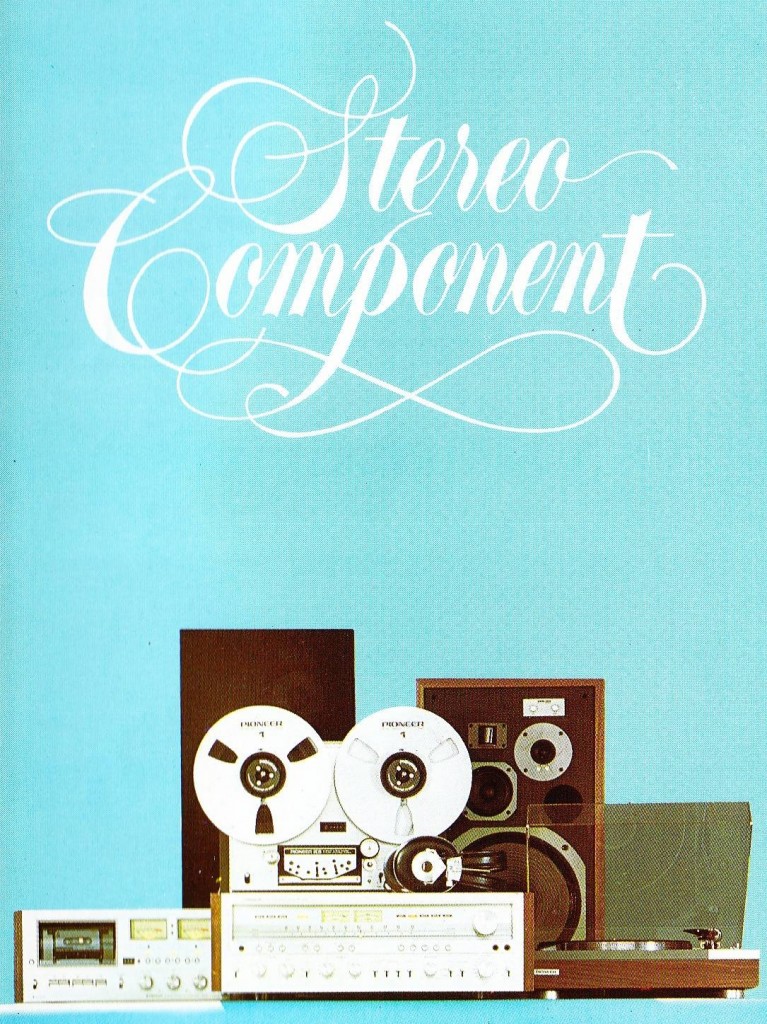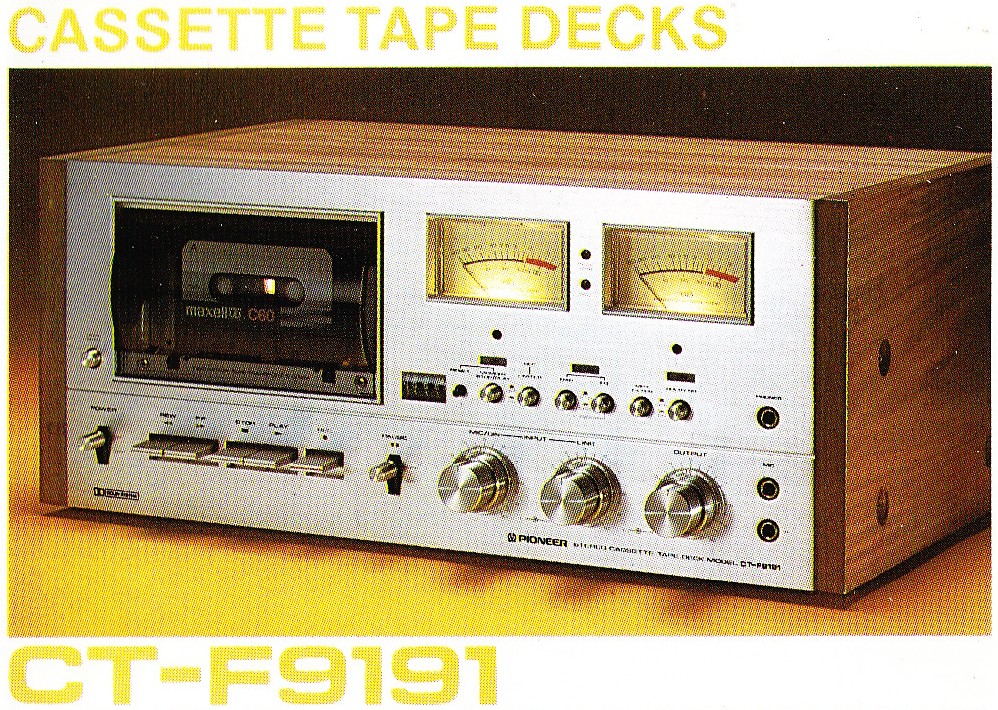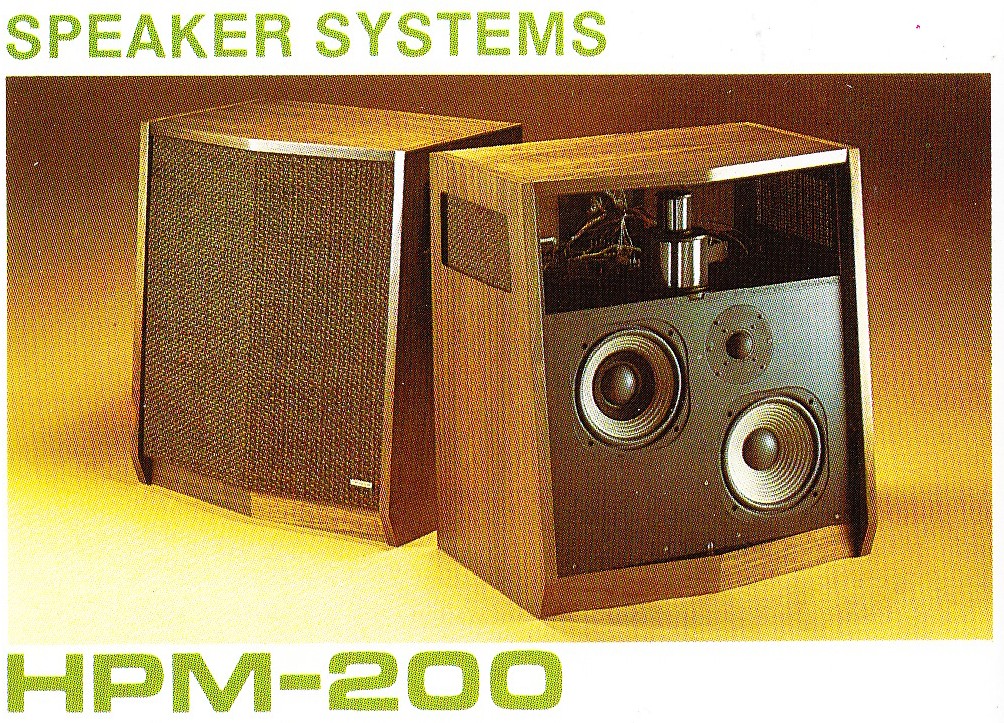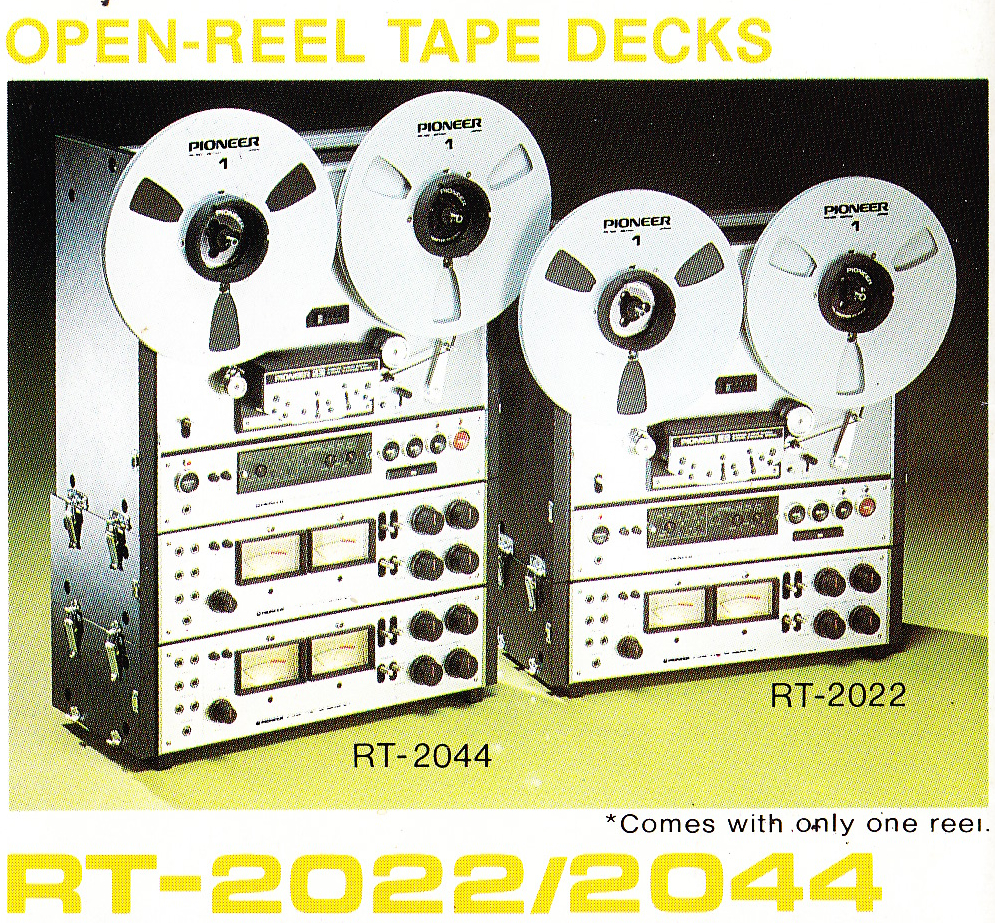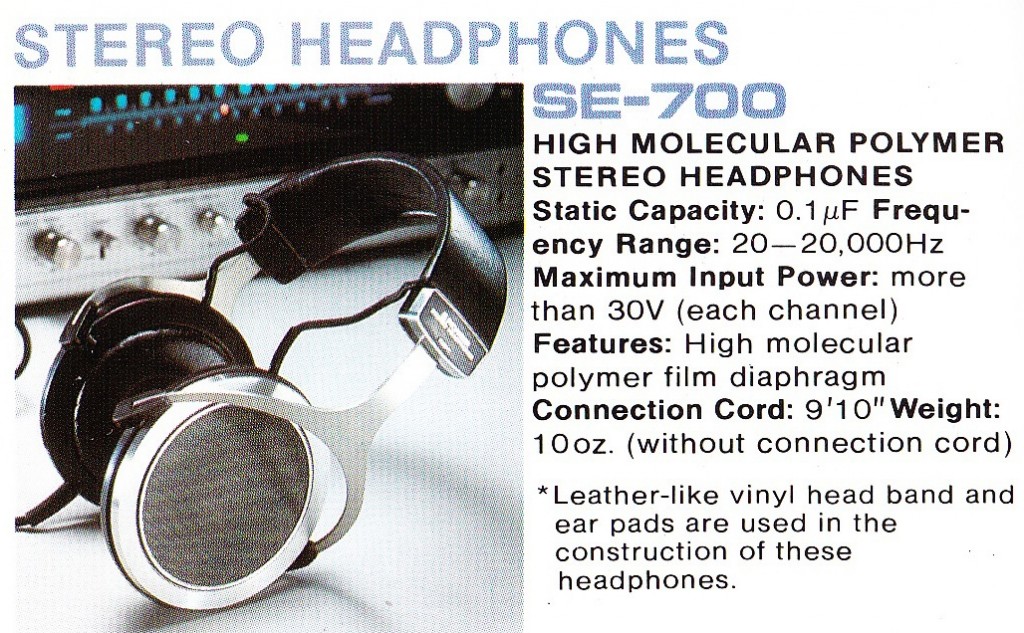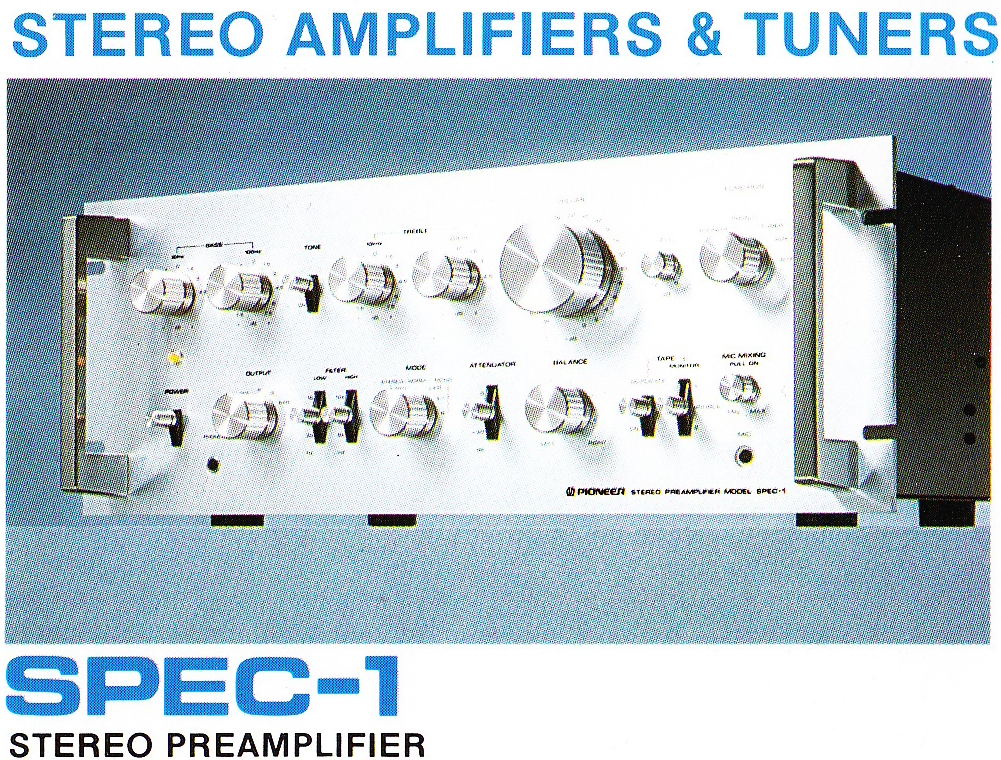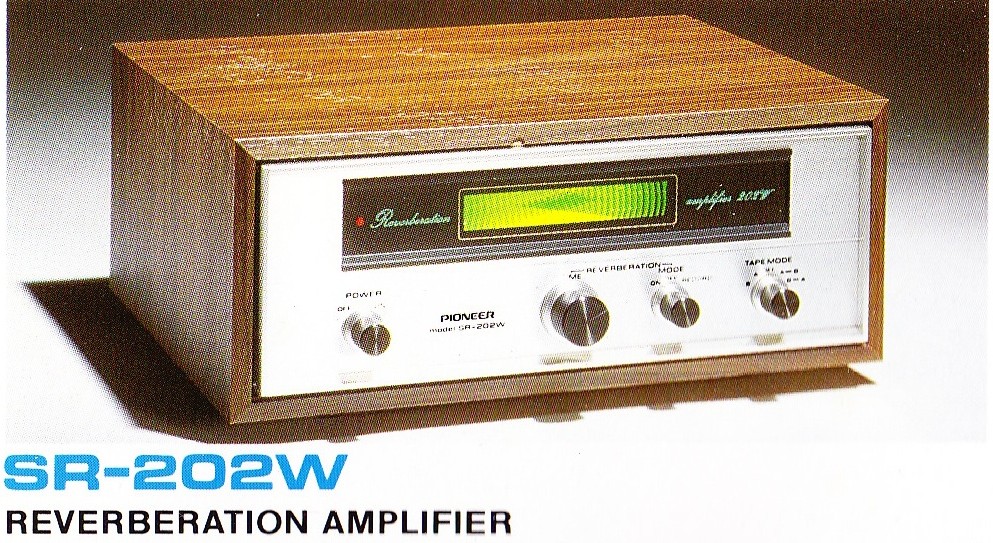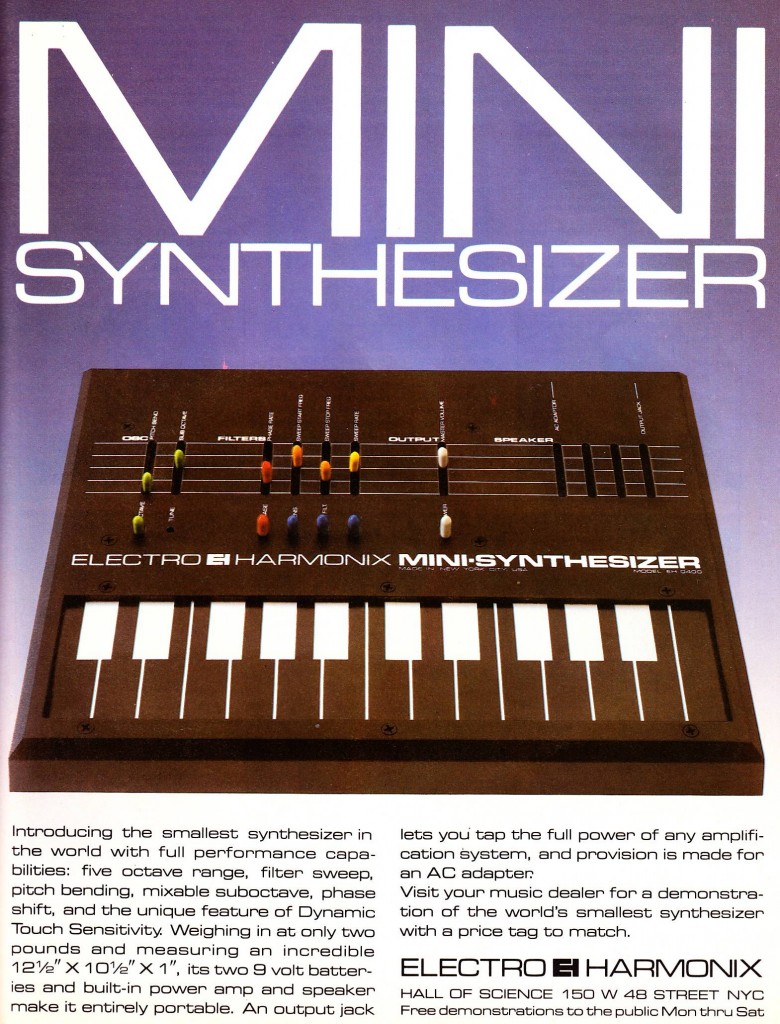 Today: a quick look at some forgotten synths+keys from circa 1980 A.D. Above: the Electro-Harmonix Mini Synth, a pretty cool little piece. Incredibly, it has a touch-sensitive keyboard. Other period entries in the mini-analog-monosynth field included my beloved Yamaha CS-01 and ???
Today: a quick look at some forgotten synths+keys from circa 1980 A.D. Above: the Electro-Harmonix Mini Synth, a pretty cool little piece. Incredibly, it has a touch-sensitive keyboard. Other period entries in the mini-analog-monosynth field included my beloved Yamaha CS-01 and ???
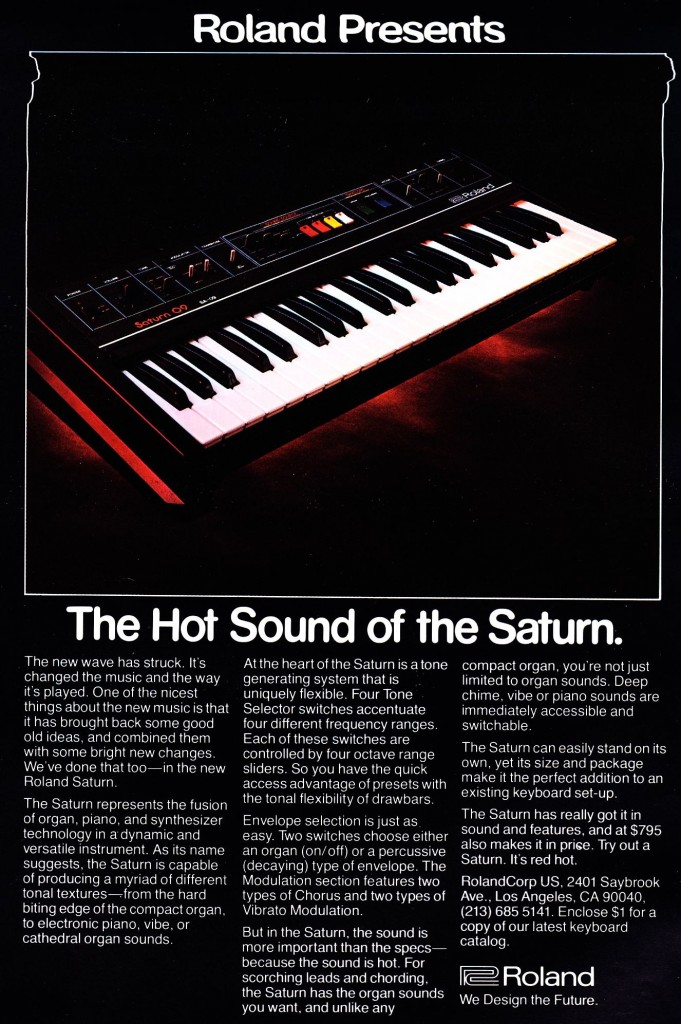 Above: Roland’s Saturn, a hopped up organ similar to the RS-09. Read the advert text for Roland’s suggestion that the Saturn’s sound corresponds to the aesthetic values of New Wave (i.e., trad rock + the new ‘punk’ sounds = New Wave, demanding a combo organ with… something extra….).
Above: Roland’s Saturn, a hopped up organ similar to the RS-09. Read the advert text for Roland’s suggestion that the Saturn’s sound corresponds to the aesthetic values of New Wave (i.e., trad rock + the new ‘punk’ sounds = New Wave, demanding a combo organ with… something extra….).
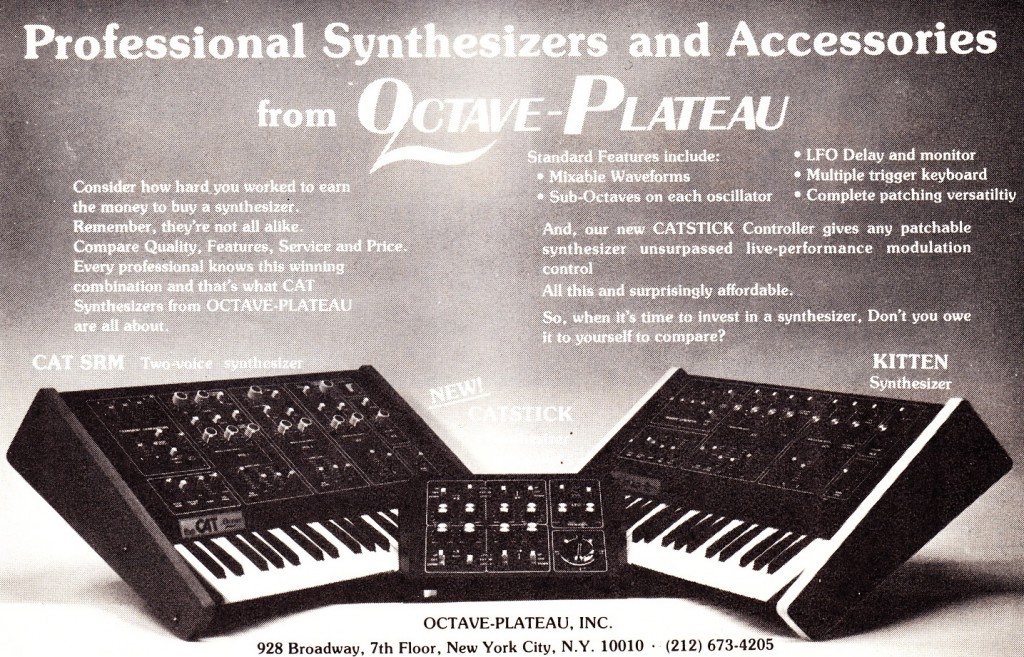 Octave-Plateau’s CAT and KITTEN synthesizers. But what’s that lil’ box in the center?
Octave-Plateau’s CAT and KITTEN synthesizers. But what’s that lil’ box in the center?
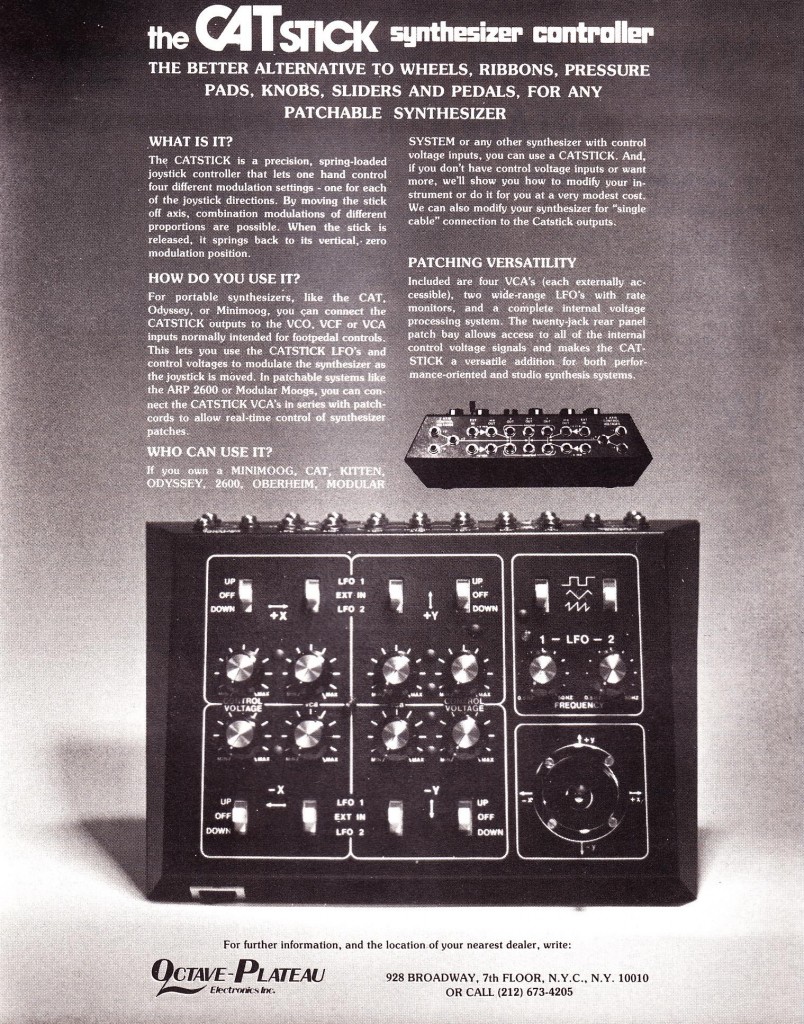 Why it’s the CAT STICK, a four-source modulation generator. Pretty good, pretty neat…
Why it’s the CAT STICK, a four-source modulation generator. Pretty good, pretty neat…
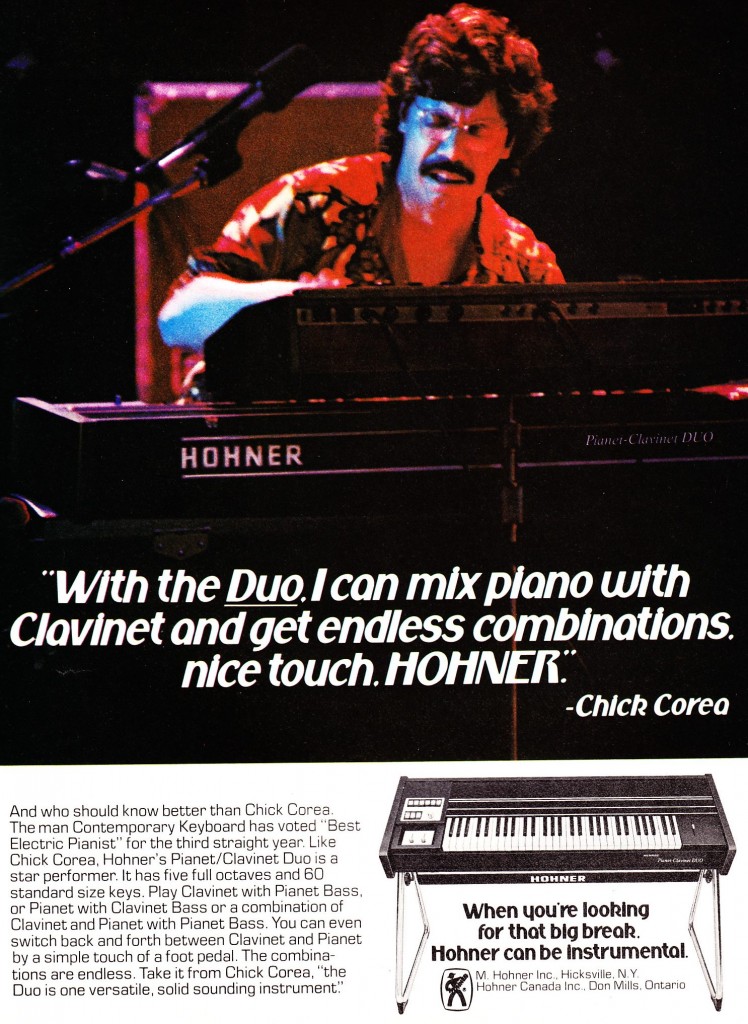 Above: the Hohner Duo, a large mechanical nightmare that comprises a complete Clavinet and a complete Pianet in One-Handy-Keyboard. We have a fully-restored Duo at Gold Coast Recorders and it makes the occasional appearance on tracks. Coolest unexpected feature: keyboard split!
Above: the Hohner Duo, a large mechanical nightmare that comprises a complete Clavinet and a complete Pianet in One-Handy-Keyboard. We have a fully-restored Duo at Gold Coast Recorders and it makes the occasional appearance on tracks. Coolest unexpected feature: keyboard split!
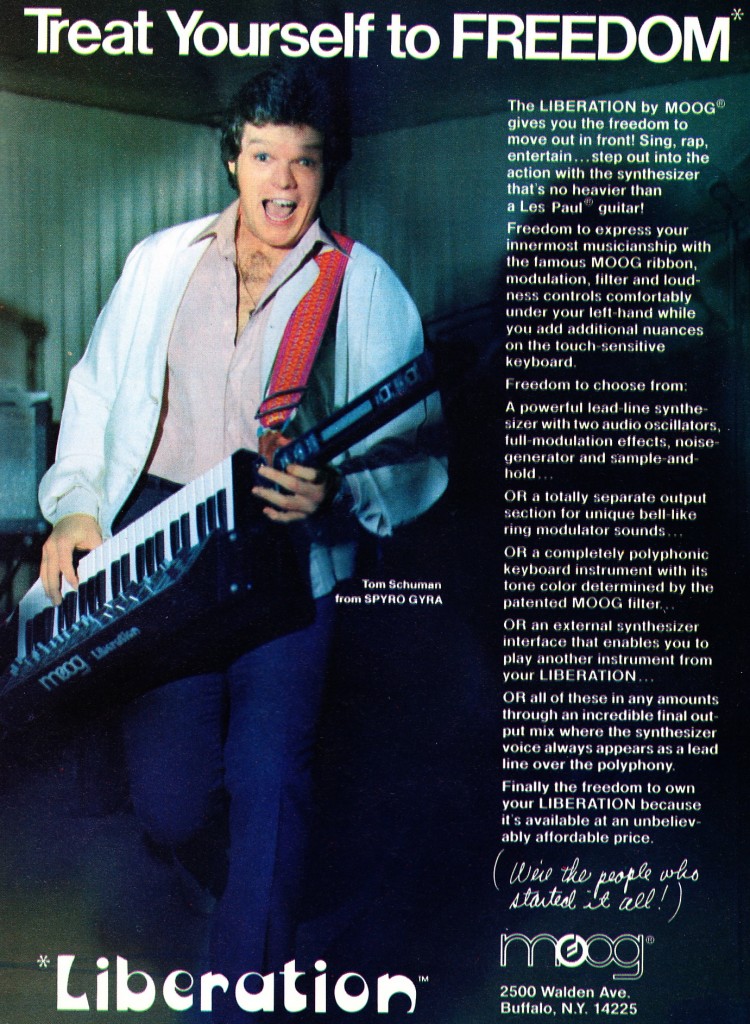
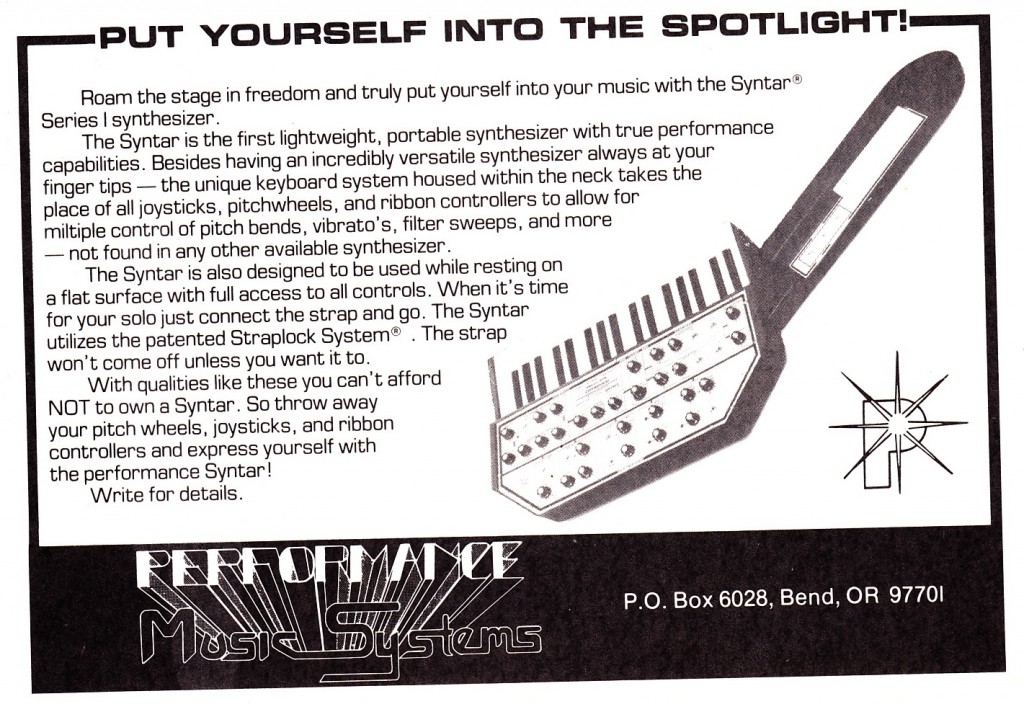 Above: the Moog Liberation and Performance Music System’s SYNTAR, early Keytar instruments. Nice Spyro Gyra appearance.
Above: the Moog Liberation and Performance Music System’s SYNTAR, early Keytar instruments. Nice Spyro Gyra appearance.

